Ethan Zuckerman
Identifying and Investigating Global News Coverage of Critical Events Such as Disasters and Terrorist Attacks
Jun 15, 2025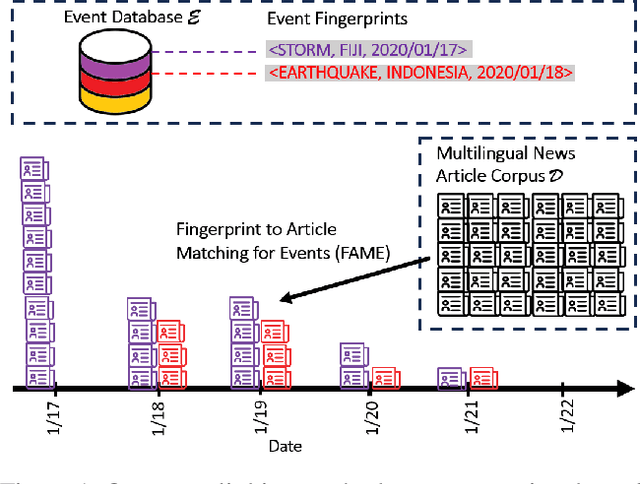


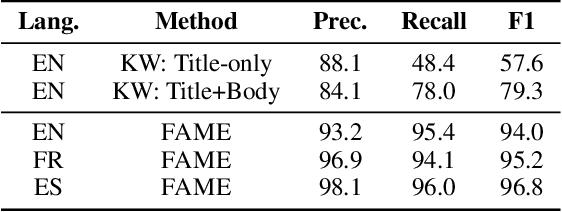
Abstract:Comparative studies of news coverage are challenging to conduct because methods to identify news articles about the same event in different languages require expertise that is difficult to scale. We introduce an AI-powered method for identifying news articles based on an event FINGERPRINT, which is a minimal set of metadata required to identify critical events. Our event coverage identification method, FINGERPRINT TO ARTICLE MATCHING FOR EVENTS (FAME), efficiently identifies news articles about critical world events, specifically terrorist attacks and several types of natural disasters. FAME does not require training data and is able to automatically and efficiently identify news articles that discuss an event given its fingerprint: time, location, and class (such as storm or flood). The method achieves state-of-the-art performance and scales to massive databases of tens of millions of news articles and hundreds of events happening globally. We use FAME to identify 27,441 articles that cover 470 natural disaster and terrorist attack events that happened in 2020. To this end, we use a massive database of news articles in three languages from MediaCloud, and three widely used, expert-curated databases of critical events: EM-DAT, USGS, and GTD. Our case study reveals patterns consistent with prior literature: coverage of disasters and terrorist attacks correlates to death counts, to the GDP of a country where the event occurs, and to trade volume between the reporting country and the country where the event occurred. We share our NLP annotations and cross-country media attention data to support the efforts of researchers and media monitoring organizations.
Multilingualism, Transnationality, and K-pop in the Online #StopAsianHate Movement
Mar 04, 2025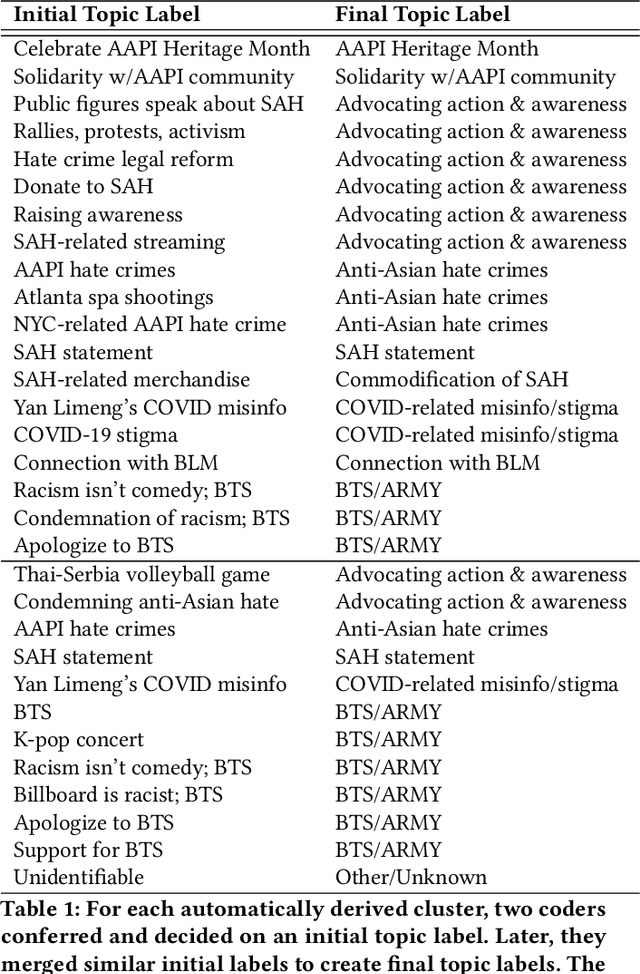
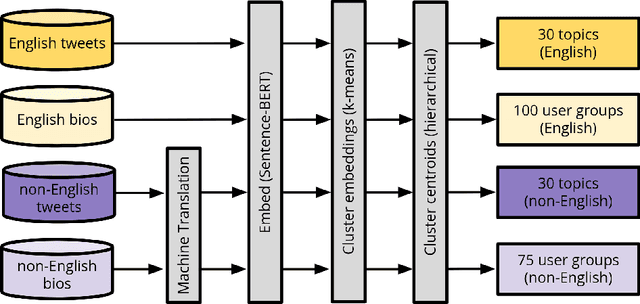
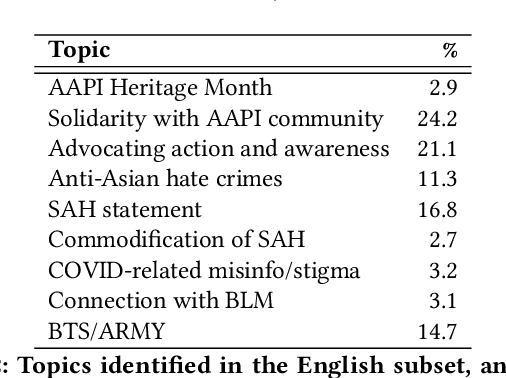
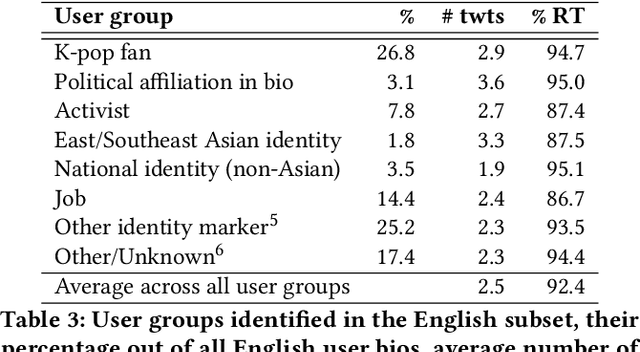
Abstract:The #StopAsianHate (SAH) movement is a broad social movement against violence targeting Asians and Asian Americans, beginning in 2021 in response to racial discrimination related to COVID-19 and sparking worldwide conversation about anti-Asian hate. However, research on the online SAH movement has focused on English-speaking participants so the spread of the movement outside of the United States is largely unknown. In addition, there have been no long-term studies of SAH so the extent to which it has been successfully sustained over time is not well understood. We present an analysis of 6.5 million "#StopAsianHate" tweets from 2.2 million users all over the globe and spanning 60 different languages, constituting the first study of the non-English and transnational component of the online SAH movement. Using a combination of topic modeling, user modeling, and hand annotation, we identify and characterize the dominant discussions and users participating in the movement and draw comparisons of English versus non-English topics and users. We discover clear differences in events driving topics, where spikes in English tweets are driven by violent crimes in the US but spikes in non-English tweets are driven by transnational incidents of anti-Asian sentiment towards symbolic representatives of Asian nations. We also find that global K-pop fans were quick to adopt the SAH movement and, in fact, sustained it for longer than any other user group. Our work contributes to understanding the transnationality and evolution of the SAH movement, and more generally to exploring upward scale shift and public attention in large-scale multilingual online activism.
Global News Synchrony and Diversity During the Start of the COVID-19 Pandemic
May 01, 2024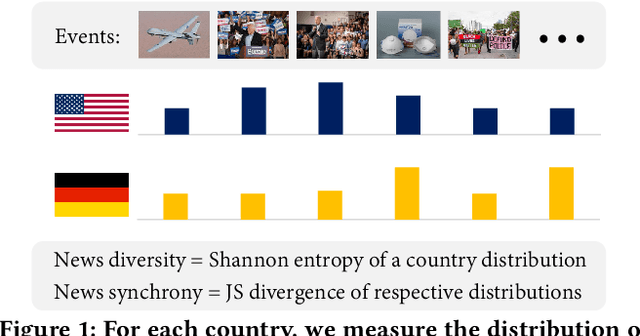
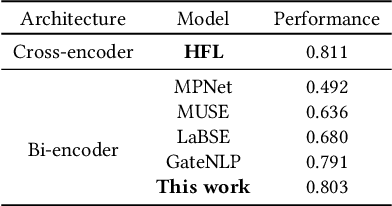
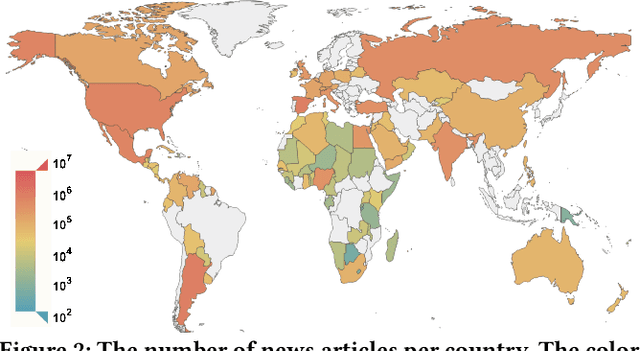
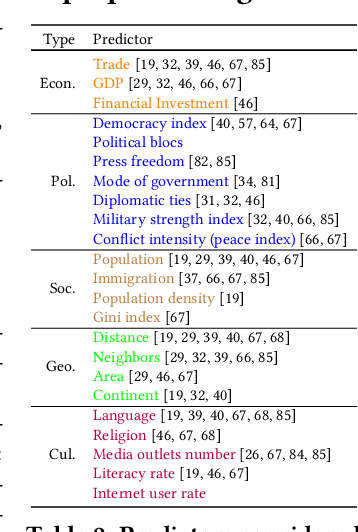
Abstract:News coverage profoundly affects how countries and individuals behave in international relations. Yet, we have little empirical evidence of how news coverage varies across countries. To enable studies of global news coverage, we develop an efficient computational methodology that comprises three components: (i) a transformer model to estimate multilingual news similarity; (ii) a global event identification system that clusters news based on a similarity network of news articles; and (iii) measures of news synchrony across countries and news diversity within a country, based on country-specific distributions of news coverage of the global events. Each component achieves state-of-the art performance, scaling seamlessly to massive datasets of millions of news articles. We apply the methodology to 60 million news articles published globally between January 1 and June 30, 2020, across 124 countries and 10 languages, detecting 4357 news events. We identify the factors explaining diversity and synchrony of news coverage across countries. Our study reveals that news media tend to cover a more diverse set of events in countries with larger Internet penetration, more official languages, larger religious diversity, higher economic inequality, and larger populations. Coverage of news events is more synchronized between countries that not only actively participate in commercial and political relations -- such as, pairs of countries with high bilateral trade volume, and countries that belong to the NATO military alliance or BRICS group of major emerging economies -- but also countries that share certain traits: an official language, high GDP, and high democracy indices.
 Add to Chrome
Add to Chrome Add to Firefox
Add to Firefox Add to Edge
Add to Edge